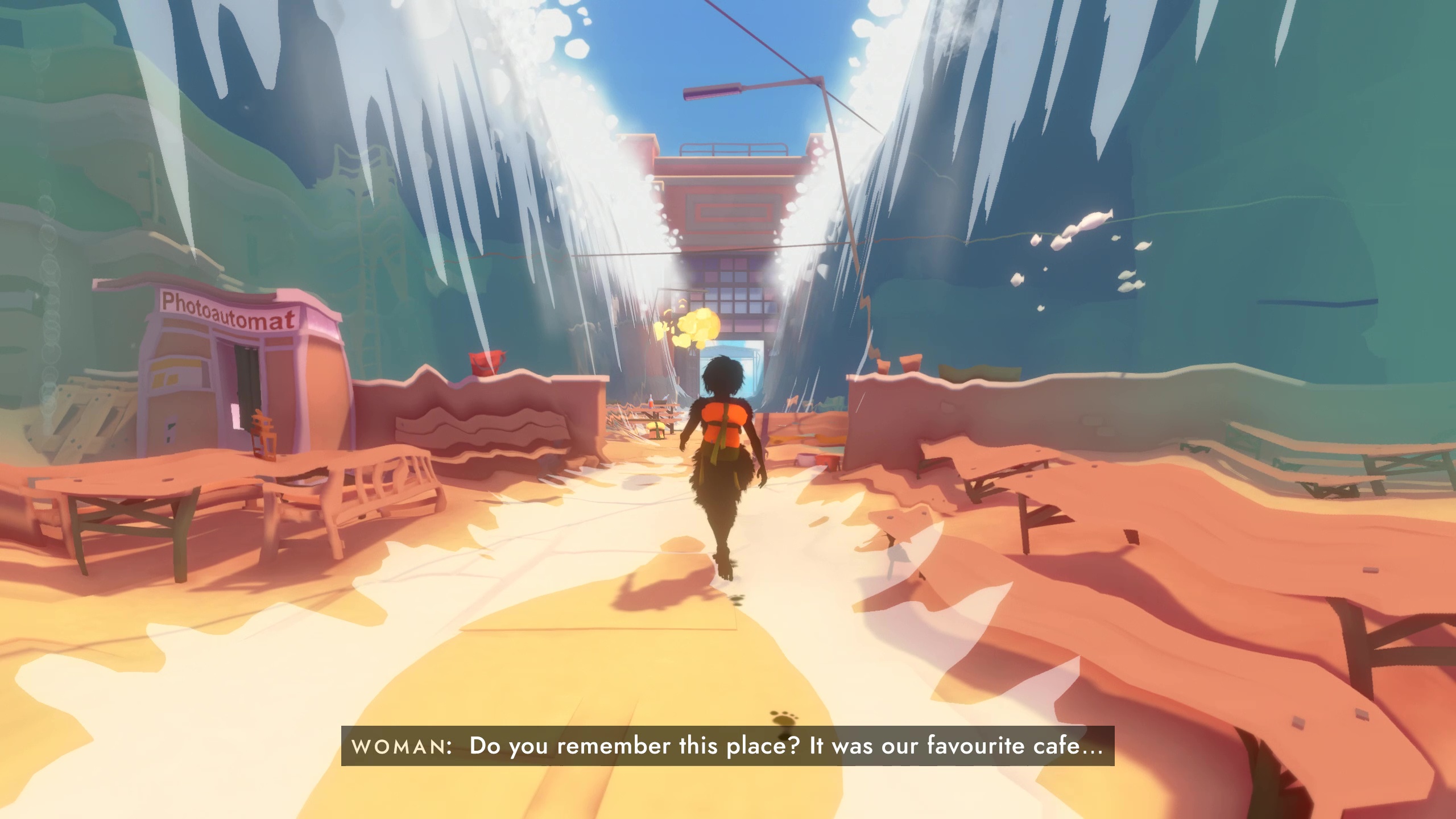Our Verdict
Sea of Solitude is a gorgeous adventure that knows its way around mental illness, but doesn't make great use of the medium to tell its story.
PC Gamer's got your back
What is it? A short narrative adventure about isolation and depression
Expect to pay: $20 / £16
Developer: Jo-Mei
Publisher: EA
Reviewed on: Windows 10, Core i9-9900K, 32GB RAM, GeForce GTX 2080
Multiplayer: None
Link: www.ea.com/games/sea-of-solitude
My dad is a big hairy chameleon and my mom is a snake-haired giant. They're parting the infinite sea around Kay, Sea of Solitude's player-protagonist, screaming at one another while I transform black, spiky children into blue, happy children via flashes from a phantasmagorical flare gun. It's the only way I can clear the corruption, a wormy black substance infecting the scene and characters. It's the only way my monster parents will settle their differences and get a divorce or make it work.
Kay is a lot like those kids. She's caught in the domestic crossfire, oscillating between the darkness of anger and despair and the bright blue natural curiosity of childhood. The whole scene is meant to be a troubling reflection of her experiences watching her parents fight as a kid. I don't catch much of what the monster parents say though, as I'm too busy fiddling with the Dichotomy Kids. The action doesn't quite transmit an emotional payoff. I just use blue kids to clear the corruption while evil kids knock me around.
If I'm meant to feel urgency and tension, I don't. I feel like I'm operating the cold machinery of the game, spinning gears and pulling levers to move the puppets along. And that's Sea of Solitude's biggest issue: it has mature, nuanced stories about mental health and relationships to tell, but tells them via clumsy dialogue in the body of a dull, indistinct third-person exploration game.
Choppy waters
Sea of Solitude takes place in a watery realm, where the world has been submerged beneath an infinite ocean. Kay wakes up in this place, disoriented, alone, and covered in black feathers. You'll get in and out of the boat, floating between the island rooftops of a submerged city, opening paths, clearing areas of corruption to rid the water of monsters, and performing simple platforming challenges. But for the most part, you nudge Kay along a narrow path while the story unfolds.
Shadowy school kids chase her around the hallways of an abandoned school, threatening to bully—even kill—her younger brother, who takes the form of an extremely sad and large bird. Kay's depression is a slithery whale with a human-like face, taunting her from the water throughout the whole adventure. Her own self-doubt arrives in the form of a tall, slender woman bent over beneath a shell like a hermit crab, greeting Kay by calling her a worthless piece of shit.

Sea of Solitude is surreal and creepy, a story that plays out like a waking dream, leaping from one monster to the next in a series of fables about Kay's inner and outer life that don't wrap up in a neat, storybook manner, even though its bright, starkly contrasting pastels would look right at home in hardback graphic novel.
It impresses visually, but loses momentum whenever a character speaks. I just didn't buy Kay as a character when her default reaction to encountering a terrible beast for the first time wasn't abject horror. Early on, she watches a blackened leviathan hurl itself across the sky and her first reaction is to say it looks sad before moving along. It undermines her greater character arc, which depicts her coming to terms with these nightmares over time. She's too curious and unperturbed to feel at risk or emotionally fraught. She's talkative, cracking jokes or placidly explaining her emotional state as if I don't have eyes and ears capable of putting it together myself. It's a game about isolation and misery, but Sea of Solitude didn't evoke sadness or disorientation in me for more than a few minutes at a time.
Lost at sea
Things almost come together in a late game act, when Kay's former boyfriend manifests as a majestic white wolf. They've missed each other, but anytime Kay hugs him, the white shell falls away to expose the pitch black monster beneath. The wolf recoils and runs away. Kay just wants to take care of him and he wants to put on a strong face, but he also wants to die. It's exactly how I feel from time to time. It's such a specific kind of sad, wrapped up in anger and self-deprecation and love—something I don't see so explicitly represented in games often.
Physical abuse, suicidal ideations, and trauma are brought to the fore and held there, firmly.
Here's a hamfisted narrative platformer with huge, flashing analogies for depression telling me it's OK to ask for time and space to heal so I don't hurt anyone close to me in the wake of all that inexplicable emotion. I feel seen, but only for a moment, because then I'm thrown into another stodgy action sequence where I use pieces of the wolf shell (ego) to melt ice (emotional barriers) while demon girls (demon girls) chase me across icy cliffs.
The visuals are analogous to theme, but, again, the action is something else completely, turning a somber, crucial character moment into a rote series of chases. Operating the machinery, yet again.
It's almost all like this: rigid action opposing the emotion propped up by art and narration. Evading a furry demon fish representing Kay's depression is more exciting than miserable, and ascending a dangerous dilapidated skyscraper while your furry chameleon dad rampages up top is tense and a little dizzying, but not horrifying and hurtful. While it's still possible to gather The Point from the comically overt metaphors representing the strife in Kay's family and personal life, their impact is dulled by the disconnect between themes and action.

Sprinting by steam vents to avoid Kay's father's emotional abuse isn't a powerful videogame analogy. It just plays out like Ratchet & Clank: The Quest to Get Un-sad, a game designed to be fun and written to make you feel the opposite.
Sea of Solitude took me a breezy three hours to finish, so I'm not sure why it's so conservative in design. I expected to take a misery bath and come out changed, just like Kay. Instead, I drifted further and further from Kay's emotional experience over time.
As a storybook interpretation of Kay's struggle with depression, Sea of Solitude occasionally works. It doesn't wash away deeply embedded trauma with a wand. Physical abuse, suicidal ideations, and trauma are brought to the fore and held there, firmly. Sea of Solitude doesn't guarantee we'll always be OK. It only guarantees change, that it won't always be so bad, but that it will certainly be bad sometimes.
But there are better-written stories about mental illness and games that better align theme, art, and action. Sea of Solitude knows true suffering and the difficulty of change, but it doesn't know how to best share that wisdom.
Sea of Solitude is a gorgeous adventure that knows its way around mental illness, but doesn't make great use of the medium to tell its story.
James is stuck in an endless loop, playing the Dark Souls games on repeat until Elden Ring and Silksong set him free. He's a truffle pig for indie horror and weird FPS games too, seeking out games that actively hurt to play. Otherwise he's wandering Austin, identifying mushrooms and doodling grackles.



